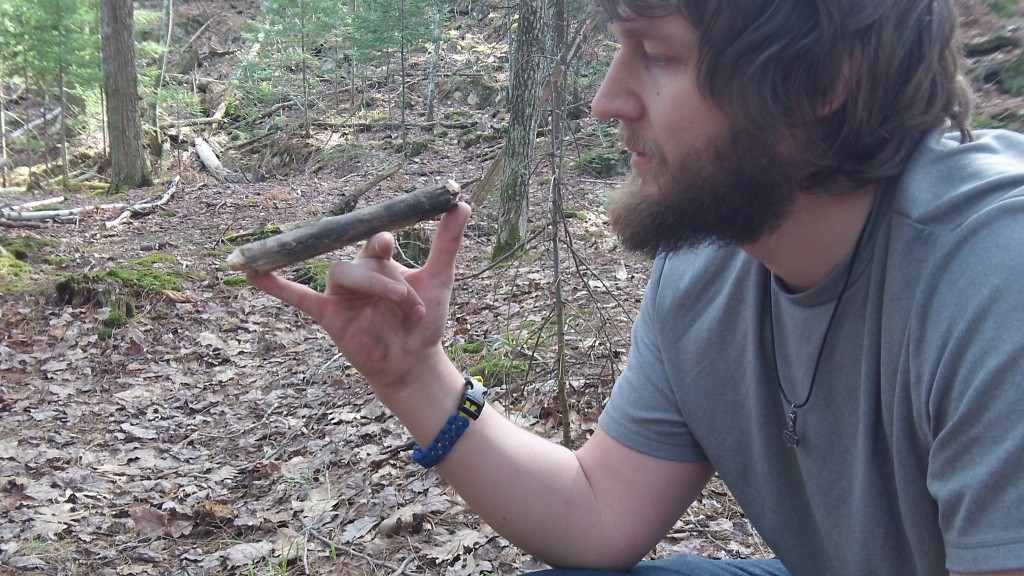As ever, check with your regional rules before using bushcraft and primitive approaches in a non-survival situation.
The Paiute Deadfall is a fast serve kill-trap that uses cordage rather than only attaches as seen in a figure-four deadfall. For the kill force, it must be around five times the target animals value. Remember, deadfalls are not toys and cannot make distinctions between targets that may set it off. If something specifies off the deadfall it may be killed or injured without being the target animal.
The Paiute Deadfall necessitates two attaches, a piece of cordage, a initiation mechanism, and a heavy weight to subdue the prey.
The two protrudes should be about as long as one’s pinky to thumb in the “Hang-loose” gesture.
Next, engrave a flat skin-deep to rest the rock upon. This is etched on what is to be the top horizontal attach. With a flat surface, it will be much easier to stabilize the rock as on the horizontal stick.
Carve the horizontal stick in a same fashion as this constricted section will act as a swivel.
It is now time to make the horizontal stick and carve a notch into it. This notch acts as the female constituent for the male one of the purposes of the horizontal stick.
The picture above is the bottom side of the horizontal stick. The horizontal persist will poise on the male segment of the horizontal attach like such
The trigger mechanism is the next to be built. This persist is the bait stick. It presses against the provoke mechanism and influences against the cliff. It is where bait will be situated to draw in prey.
The prompt mechanism to hag cordage shall be tied
With a piece of cordage, secure a close-fisted braid around the initiation mechanism.
This is bind to the back side of the horizontal stick on the far end away from the female portion.
It is then drew down and wrapped in all regions of the horizontal fasten and held in place by the bait stick. If you study the pictures closely, it will become apparent how the provoke is set.
Take the horizontal stick and adapt the male part into the female socket. The flat portion of the horizontal stick should be facing the direction of the rock as it will bear the weight of the stone. Finding a good flat rock-and-roll to use is very important. Going out of the way to find such a cliff and carry it to the catching locate may very well be worth it for reason of even going the trap to balance.
Carefully place the value of the stone on the horizontal stick and begin to set the provoke by twine the prompt bit in all regions of the horizontal stick.
The trap is ready to be held in place by the bait stick, but because the rope aimed up being a little too long and not supporting fairly tension to hold the rock up, I wrapped it in all regions of the horizontal stick once more.
The bait stick was then positioned to pressure against the cliff and the provoke mechanism. The bait is placed on the deposit as close to the underside bottom of the boulder as possible.
The trap, when done correctly, shall now be free standing and ready to make a kill while you are off foraging.
A front view to better appreciate the trigger mechanism
A food that has to be tugged at and plucked makes an excellent bait on the bait deposit as this will cause the trigger to be set off. Notice the starving strolling stick about to go for the bait remain!
The stick runs for the enticement causing the provoke mechanism to liberate and totter the supporting structure!
Read more: survivalmagazine.org
